Best Places to Travel In China
1.Beijing (Capital Of China)
Beijing (China)
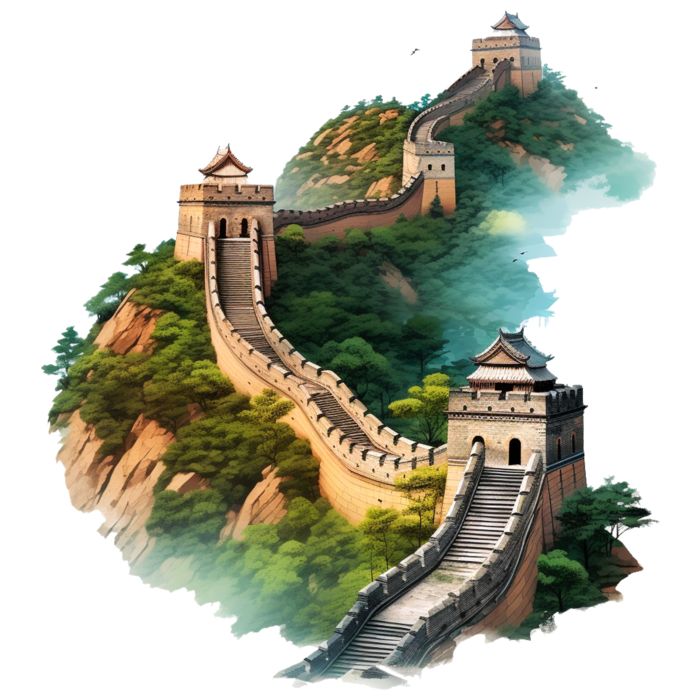
China, a vast and diverse country in East Asia, is known for its rich history, cultural heritage, and significant global influence. It is home to some of the world’s most iconic landmarks, including the Great Wall, the Forbidden City, and the Terracotta Army. China’s landscape ranges from bustling metropolises like Beijing and Shanghai to scenic wonders such as the Yangtze River and the Karst Mountains. The country is renowned for its culinary diversity, ancient traditions, and rapid modernization. With a history spanning thousands of years, China offers a unique blend of ancient customs and contemporary developments
Beijing, the capital of China, is a vibrant city where ancient history meets modern innovation. It’s home to some of the world’s most famous landmarks, including the Great Wall, the Forbidden City, and Tiananmen Square. Visitors can explore centuries-old temples, stroll through traditional Hutong alleys, and enjoy the serene beauty of imperial gardens like the Summer Palace. Beijing also offers a dynamic culinary scene, bustling markets, and contemporary art districts. As a cultural and political hub, the city provides a rich travel experience that blends historical exploration with modern urban life.
The Great Wall of China is one of the most iconic and impressive architectural feats in the world. Stretching over 13,000 miles, it was originally built to protect Chinese states from invasions by nomadic tribes. The wall, constructed over several dynasties, primarily during the Ming Dynasty, winds through mountains, deserts, and plains, offering breathtaking views. Popular sections like Badaling and Mutianyu are easily accessible from Beijing and showcase the wall’s grandeur and historical significance. Visiting the Great Wall provides a deep sense of history and an unforgettable experience of ancient China’s might and ingenuity.
Best months to visit in Beijing
Spring (April to June):
- Weather: Mild and pleasant with blooming flowers, making it a great time for outdoor activities.
- Crowds: Fewer tourists compared to the summer months.
Autumn (September to November):
- Weather: Cool and crisp, with clear skies and colorful foliage, offering stunning views of the Great Wall.
- Crowds: Generally less crowded than the peak summer season.
Open Days And Timing of Beijing
Badaling Section:
- Opening Hours:
- Summer (April to October): 6:30 AM to 7:00 PM
- Winter (November to March): 7:00 AM to 6:00 PM
- Note: Badaling is the most visited section and is well-restored, offering easy access and facilities.
- Opening Hours:
Mutianyu Section:
- Opening Hours:
- Summer (April to October): 7:30 AM to 6:00 PM
- Winter (November to March): 8:00 AM to 5:00 PM
- Note: Known for its beautiful scenery and fewer crowds, Mutianyu is a great alternative to Badaling.
- Opening Hours:
Jinshanling Section:
- Opening Hours:
- Year-Round: 6:00 AM to 6:00 PM
- Note: This section is less crowded and offers a more challenging hike with stunning views.
- Opening Hours:
Simatai Section:
- Opening Hours:
- Daytime: 8:00 AM to 5:00 PM
- Night Tour: 5:30 PM to 10:00 PM (limited to a specific area)
- Opening Hours:
Ticket of Beijing
Badaling Section:
- Entrance Fee:
- April to October: Approximately ¥40 RMB (around $6 USD)
- November to March: Approximately ¥35 RMB (around $5 USD)
- Cable Car (Optional):
- Round Trip: ¥140 RMB (around $20 USD)
- One Way: ¥100 RMB (around $15 USD)
- Entrance Fee:
Mutianyu Section:
- Entrance Fee: ¥40 RMB (around $6 USD) year-round
- Cable Car (Optional):
- Round Trip: ¥120 RMB (around $18 USD)
- One Way: ¥100 RMB (around $15 USD)
- Toboggan Ride (Downhill): ¥100 RMB (around $15 USD)
Jinshanling Section:
- Entrance Fee:
- April to October: ¥65 RMB (around $9.50 USD)
- November to March: ¥55 RMB (around $8 USD)
- Cable Car (Optional): ¥40 RMB (around $6 USD) one way
- Entrance Fee:
Simatai Section:
- Entrance Fee: ¥40 RMB (around $6 USD) for day visits
- Night Tour: ¥80 RMB (around $12 USD)
- Cable Car (Optional): ¥160 RMB (around $23 USD) round trip
Famous places of China
Ming Tombs (Thirteen Tombs of the Ming Dynasty):
- Distance from Beijing: About 50 km (31 miles) northwest.
- Description: A UNESCO World Heritage site where 13 emperors of the Ming Dynasty are buried. The site features grand mausoleums, beautiful architecture, and serene landscapes.
Sacred Way:
- Distance from the Ming Tombs: Adjacent.
- Description: The Sacred Way is a 7 km long road lined with statues of animals, officials, and mythical creatures that leads to the Ming Tombs. It symbolizes the path to the afterlife.
Gubei Water Town:
- Distance from Beijing: About 140 km (87 miles) northeast.
- Description: A picturesque water town with traditional architecture, canals, and stone bridges, located near the Simatai section of the Great Wall. It offers a charming blend of history, culture, and scenic beauty.
Chengde Mountain Resort:
- Distance from Beijing: About 230 km (143 miles) northeast.
- Description: A UNESCO World Heritage site, this summer retreat for Qing emperors features vast gardens, palaces, and temples. It’s known for its tranquil environment and cultural significance.
Longqing Gorge:
- Distance from Beijing: About 85 km (53 miles) northwest.
- Description: Often called the “Lesser Three Gorges,” Longqing Gorge is known for its stunning river views, steep cliffs, and beautiful natural scenery. It’s a great spot for boat rides and hiking.
Shidu Scenic Area:
- Distance from Beijing: About 100 km (62 miles) southwest.
- Description: Known as the “Guilin of the North,” Shidu features karst landscapes, rivers, and cliffs. It’s popular for outdoor activities like hiking, rock climbing, and rafting.
Cuandixia Village:
- Distance from Beijing: About 90 km (56 miles) west.
- Description: A well-preserved ancient village with traditional courtyard houses dating back to the Ming and Qing Dynasties. It offers a glimpse into rural life and traditional Chinese architecture.
Tianjin:
- Distance from Beijing: About 120 km (75 miles) southeast.
- Description: A major port city with a mix of modern skyscrapers and colonial-era architecture. Highlights include the Tianjin Eye (Ferris wheel), Ancient Culture Street, and European-style neighborhoods.
2.Shanghai (Municipality)
Shanghai(China)
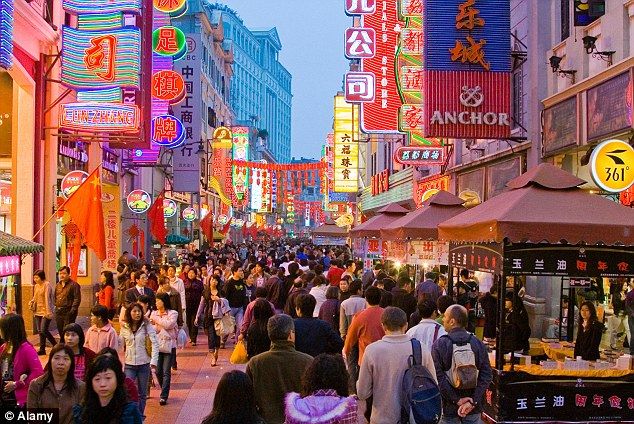
Shanghai is a dynamic and bustling metropolis, often regarded as China’s financial and cultural hub. It is a city where modern skyscrapers and historic neighborhoods coexist harmoniously. Notable landmarks include the iconic Bund waterfront, with its colonial-era architecture and stunning views of the futuristic skyline in Pudong, featuring the Shanghai Tower and Oriental Pearl Tower. The city also boasts vibrant cultural districts like Xintiandi and Tianzifang, as well as traditional attractions such as Yu Garden and the historic City God Temple. Shanghai’s blend of historic charm and cutting-edge modernity, coupled with its diverse culinary scene and lively arts scene, makes it a captivating destination for travelers.
Nanjing Road is one of Shanghai’s most famous shopping streets and is often considered the commercial heart of the city. Stretching over 5 kilometers, it is divided into two sections: Nanjing East Road and Nanjing West Road. The street is lined with a mix of high-end boutiques, department stores, and traditional shops, offering everything from luxury brands to local goods. It’s a bustling area both day and night, attracting millions of shoppers and tourists annually. Nanjing Road is also known for its vibrant atmosphere, with street performers, food stalls, and neon lights adding to the lively experience.
Best months to visit in shanghai
The best months to visit Nanjing Road in Shanghai.
April to May and September to October.
these months, the weather is mild and pleasant, making it ideal for strolling along the street and exploring the shops and attractions. Spring and autumn in Shanghai are characterized by comfortable temperatures and lower humidity, providing an enjoyable experience for visitors.
Open Days And Timing of Shanghai
Nanjing Road itself is a public street and doesn’t have specific opening hours. However, the shops, restaurants, and other businesses along Nanjing Road generally operate with the following hours:
- Shops and Malls: Typically open from around 10:00 AM to 10:00 PM. Some larger department stores or international brands might have extended hours.
- Restaurants and Cafes: Often open from about 9:00 AM to 11:00 PM or later.
- Street Performers and Food Stalls: Generally active throughout the day, with many food stalls operating into the late evening.
Ticket of Shanghai
No ticket is required to visit Nanjing Road itself, as it is a public street. However, if you plan to visit specific attractions or shopping centers along Nanjing Road, some might have their own entrance fees or ticket requirements. For instance:
- Shopping Centers: Major malls like Nanjing West Road’s Plaza 66 or the IAPM Mall do not require an entry fee, but you should be prepared for potential costs related to shopping or dining inside.
- Special Events or Exhibitions: Occasionally, there might be special events or exhibitions in the area that could require tickets.
Famous places of Shanghai
1. The Bund (Waitan)
- Distance: About 1-2 kilometers west of Nanjing Road.
- Description: A historic waterfront area with stunning views of the modern skyline across the Huangpu River. The Bund is a great place for a scenic stroll and to experience the blend of old and new Shanghai.
2. People’s Square
- Distance: Approximately 1-2 kilometers southwest of Nanjing Road.
- Description: A major city square surrounded by important cultural institutions like the Shanghai Museum and the Shanghai Grand Theatre. It’s a central hub with open spaces and beautiful landscaping.
3. Yu Garden (Yuyuan Garden)
- Distance: Around 3 kilometers southeast of Nanjing Road.
- Description: A classic Chinese garden with beautiful landscaping, traditional architecture, and a bustling bazaar. It’s a tranquil escape from the city’s hustle and bustle.
4. Xintiandi
- Distance: About 2-3 kilometers south of Nanjing Road.
- Description: A trendy pedestrian area known for its restored Shikumen houses, offering a mix of dining, shopping, and nightlife. It’s a great place to experience modern Shanghai with a historical touch.
5. Shanghai Museum
- Distance: Around 1.5 kilometers southwest of Nanjing Road.
- Description: Located in People’s Square, this museum houses an extensive collection of Chinese art and historical artifacts. It’s a cultural highlight and provides insight into China’s rich history.
6. Shanghai Tower
- Distance: Approximately 3 kilometers east of Nanjing Road.
- Description: The tallest building in China with observation decks offering panoramic views of Shanghai. It’s a modern architectural marvel and a must-visit for skyline enthusiasts.
7. Oriental Pearl Tower
- Distance: About 3 kilometers east of Nanjing Road.
- Description: An iconic TV tower with observation decks, a revolving restaurant, and a Shanghai History Museum. It offers fantastic views and is a landmark in the Pudong area.
3.Hong Kong Disneyland
Hong Kong Disneyland
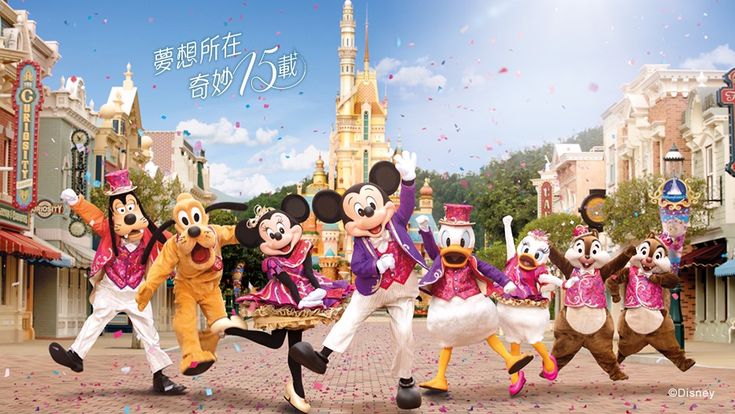
Hong Kong Disneyland is a magical theme park located on Lantau Island, blending Disney’s classic charm with unique cultural elements. Opened in 2005, it features seven themed lands, including Adventureland, Fantasyland, Tomorrowland, and Main Street, U.S.A., each offering a variety of attractions, entertainment, and dining experiences. Visitors can enjoy iconic rides like Space Mountain, It’s a Small World, and the Iron Man Experience, alongside seasonal parades and character meet-and-greets. The park’s design incorporates local cultural themes, making it a distinctive part of Disney’s global empire. With its blend of whimsical fun and immersive storytelling, Hong Kong Disneyland provides a memorable experience for visitors of all ages.
Best months to visit
Fall (October to November):
- Weather: Pleasant and cooler temperatures with low humidity, making it comfortable for outdoor activities.
- Crowds: Generally, less crowded compared to the summer peak season and major holidays.
Spring (March to May):
- Weather: Mild temperatures and lower humidity, offering comfortable conditions for exploring the park.
- Crowds: Less crowded than summer and major holiday periods, which can mean shorter wait times for attractions.
Other Considerations:
Avoid Peak Summer Months (June to August): Hong Kong can be hot and humid during these months, and it’s also the peak tourist season, leading to larger crowds and longer wait times for attractions.
Avoid Major Holidays and Public Holidays: Visiting during Chinese New Year (late January to February) and other major public holidays can result in large crowds and higher prices for accommodations.
Open Days And Timing of Hong Kong Disneyland
Daily Opening: Hong Kong Disneyland is open every day of the year.
Regular Operating Hours:
- Weekdays: Typically 10:00 AM to 8:00 PM
- Weekends and Peak Seasons: Extended hours, often from 10:00 AM to 9:00 PM or later
Seasonal Variations:
Peak Seasons: During major holidays like Chinese New Year, Christmas, and summer vacation, the park may have extended hours to accommodate increased visitor numbers.
Off-Peak Seasons: Hours may be shorter, and some attractions may have reduced operating times or be temporarily closed for maintenance.
Ticket of Hong Kong Disneyland
Single-Day Tickets:
- Adult (Ages 12-64): Approximately HKD 759 (around USD 97)
- Child (Ages 3-11): Approximately HKD 565 (around USD 72)
- Senior (Ages 65+): Approximately HKD 100 (around USD 13)
Two-Day Tickets:
- Adult: Approximately HKD 1,355 (around USD 174)
- Child: Approximately HKD 1,010 (around USD 129)
- Senior: Approximately HKD 200 (around USD 26)
Seasonal and Special Tickets:
- Park Hopper Tickets: Allows access to both Hong Kong Disneyland and other attractions within the same day or over multiple days. Prices vary based on the number of days and inclusions.
- Annual Passes: Offers unlimited access to the park for a year, with options for various benefits and discounts.
Additional Information:
Online Purchase: Buying tickets online through the official Hong Kong Disneyland website or authorized resellers often provides discounts and avoids long queues at the park entrance.
Special Offers: Check for any promotions, package deals, or seasonal offers that may be available before purchasing tickets.
Mobile App: The Hong Kong Disneyland app can also be used for purchasing tickets, checking park maps, and viewing live wait times for attractions.
Famous places of China
Ngong Ping 360:
- Distance: About 30 km (19 miles) from Hong Kong Disneyland.
- Description: A scenic cable car ride offering stunning views of Lantau Island. It leads to Ngong Ping Village, where you can visit the Tian Tan Buddha (Big Buddha) and Po Lin Monastery.
Tian Tan Buddha (Big Buddha):
- Distance: About 30 km (19 miles) from Hong Kong Disneyland.
- Description: A large bronze statue of Buddha located on Lantau Island. The site also features the Po Lin Monastery and a beautiful surrounding area.
Hong Kong SkyCity Marriott Hotel:
- Distance: About 5 km (3 miles) from Hong Kong Disneyland.
- Description: Located near the Hong Kong International Airport, this hotel offers luxurious accommodations and is convenient for travelers heading to or from the airport.
Hong Kong International Airport:
- Distance: About 6 km (4 miles) from Hong Kong Disneyland.
- Description: The main airport for Hong Kong, featuring shopping, dining, and entertainment options. It’s also a convenient transit point for travel to and from the city.
Discovery Bay:
- Distance: About 15 km (9 miles) from Hong Kong Disneyland.
- Description: A waterfront community on Lantau Island with a relaxed atmosphere, shops, dining options, and a pleasant beach area.
Citygate Outlets:
- Distance: About 10 km (6 miles) from Hong Kong Disneyland.
- Description: A large shopping mall with discounted outlet stores, dining options, and entertainment. It’s a good spot for shopping and dining close to the park.
Lantau Island:
- Distance: About 30 km (19 miles) from Hong Kong Disneyland.
- Description: Besides Ngong Ping and the Big Buddha, Lantau Island offers hiking trails, beaches, and other natural attractions, such as Tai O Fishing Village.
4.Xi'an (Shaanxi Province)
Mount Hua (China)
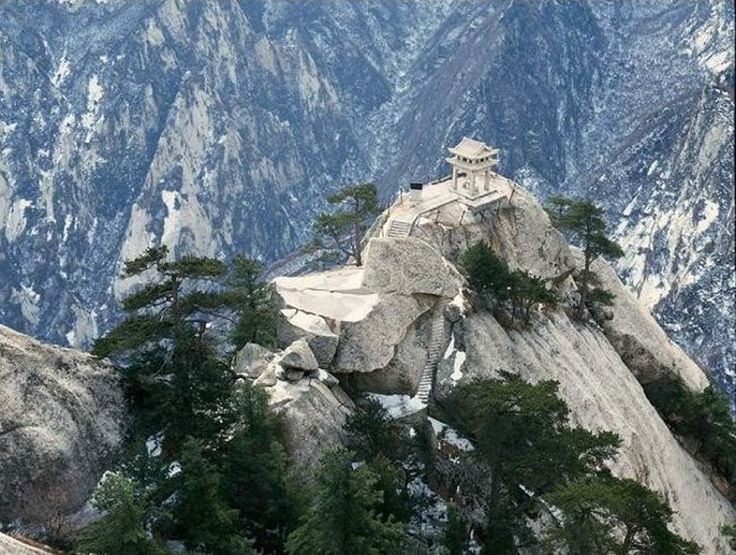
Xi’an, the capital of Shaanxi Province, is one of China’s oldest cities and a key historical hub along the Silk Road. Known for its rich cultural heritage, Xi’an is famously home to the Terracotta Army, an impressive collection of life-sized statues buried with the first Emperor Qin Shi Huang. The city also features the well-preserved ancient city wall, which offers stunning views and a glimpse into its historical fortifications. Xi’an’s vibrant Muslim Quarter provides a lively atmosphere with bustling markets and diverse street food. Additionally, the Big Wild Goose Pagoda and the Shaanxi History Museum are significant cultural sites, reflecting the city’s deep historical and religious roots.
Mount Hua (Huashan) is one of China’s Five Great Mountains, renowned for its dramatic peaks and breathtaking scenery. Located about 120 kilometers east of Xi’an, it is a popular destination for hikers and nature enthusiasts. The mountain features five distinct peaks, each offering stunning panoramic views and a variety of hiking trails, ranging from challenging to moderate. Known for its steep and narrow paths, particularly the famous “Plank Walk in the Sky,” Mount Hua combines natural beauty with a sense of adventure. The mountain also holds historical and cultural significance, with ancient Taoist temples and shrines nestled among its rugged terrain.
Best months to visit in Xi’an
The best months to visit Mount Hua (Huashan) are April to June and September to October. During these times, the weather is generally mild and pleasant, making for comfortable hiking conditions and clearer views.
- Spring (April to June): The weather is warm but not too hot, and you can enjoy the blooming flowers and lush landscapes.
- Autumn (September to October): The temperatures are cooler, and the fall foliage adds vibrant colors to the mountain scenery.
Open Days And Timing of Xi’an
- Mountain Access: Usually open from 7:00 AM to 5:00 PM.
- Cable Cars: Operating hours can vary by season but generally run from 8:00 AM to 5:00 PM.
Key Points:
- Ticketing: Tickets are required for entry to the mountain and its various attractions. It’s best to check for any updates or changes in ticket prices or availability.
- Accommodation: There are accommodations available on the mountain, allowing for overnight stays if you want to explore more thoroughly or experience sunrise or sunset.
Travel Tips:
- Peak Times: Weekends and public holidays can be crowded, so visiting on weekdays might offer a more peaceful experience.
- Weather: The weather can change rapidly, so be prepared for varying conditions and dress appropriately for hiking and temperature changes.
Ticket of Xi’am
- Standard Admission: Approximately 180 to 200 RMB (about $25 to $30 USD) for a one-day ticket. Prices can vary slightly depending on the season and any additional services or access options.
- Cable Car Tickets: Separate tickets are required for the cable cars, which can cost around 80 to 100 RMB (about $11 to $14 USD) for a one-way trip. There are cable cars for different routes, such as the North Peak and the West Peak.
Types of Tickets:
- One-Day Pass: Allows access to the mountain for one day.
- Cable Car Passes: Available for different routes, providing access to the peaks of the mountain with less hiking.
Where to Buy Tickets:
- At the Entrance: Tickets can be purchased directly at the entrance of the mountain.
- Online: Some travel websites or platforms may offer the option to purchase tickets in advance.
Important Tips:
- Peak Season: During peak tourist seasons or holidays, it’s advisable to buy tickets in advance to avoid long queues.
- Accommodation: If planning to stay overnight on the mountain, you may need to book accommodations separately.
Famous places of China
1. Hua Qing Hot Springs
- Description: Located about 30 kilometers east of Mount Hua, these historic hot springs have been a retreat for emperors since ancient times. The site features beautiful gardens and historic buildings.
- Distance: Around 30 kilometers (19 miles) from Mount Hua.
2. Xi’an
- Description: The historic city of Xi’an, located approximately 120 kilometers west of Mount Hua, is famous for the Terracotta Army and its ancient city wall. It’s a major cultural and historical hub with many attractions.
- Distance: About 120 kilometers (75 miles) from Mount Hua.
3. Famen Temple
- Description: This ancient Buddhist temple, located about 120 kilometers northwest of Mount Hua, is known for its significant relics and ancient architecture. It’s a notable site for Buddhist culture and history.
- Distance: Approximately 120 kilometers (75 miles) from Mount Hua.
4. Qianling Mausoleum
- Description: Situated about 80 kilometers north of Mount Hua, this mausoleum is the burial site of Emperor Gaozong of the Tang Dynasty and his empress. The site features impressive tomb sculptures and historical artifacts.
- Distance: Around 80 kilometers (50 miles) from Mount Hua.
5. Banpo Neolithic Village
- Description: Located around 50 kilometers west of Mount Hua, Banpo Village is an archaeological site that provides insight into the lives of the Neolithic people who lived in the region over 6,000 years ago.
- Distance: About 50 kilometers (31 miles) from Mount Hua.
5.Lijiang
Lijiang (China)
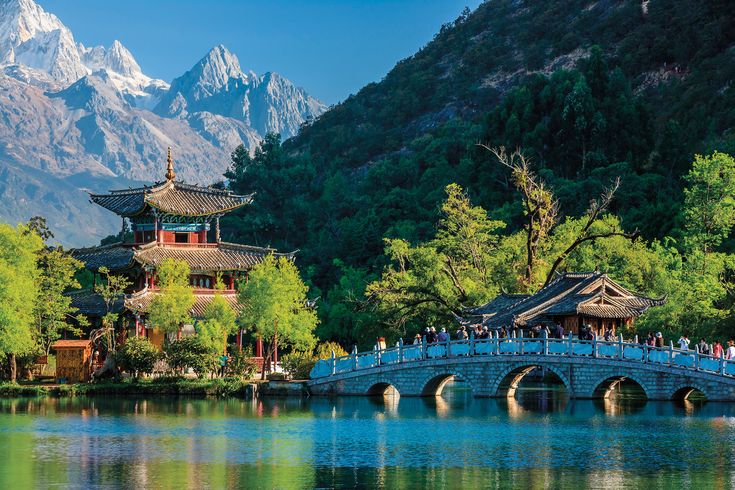
Lijiang, nestled in Yunnan Province, China, is a captivating destination known for its picturesque landscapes and rich cultural heritage. The Old Town of Lijiang, a UNESCO World Heritage Site, enchants visitors with its well-preserved ancient architecture, winding cobblestone streets, and vibrant local culture. The majestic Jade Dragon Snow Mountain offers breathtaking views and outdoor adventures, while the tranquil Black Dragon Pool provides a serene escape with its scenic beauty. With its charming old towns like Shuhe and Baisha, Lijiang seamlessly blends history, culture, and natural splendor, making it a must-visit for travelers seeking a unique and memorable experience.
The Old Town of Lijiang, a UNESCO World Heritage Site, is a beautifully preserved historic area that transports visitors back in time. Its labyrinth of cobblestone streets, traditional Naxi architecture, and charming waterways create a picturesque and vibrant atmosphere. Highlights include Sifang Street, bustling with local shops and eateries, and the iconic wooden bridges and stone buildings that reflect the rich cultural heritage of the Naxi people. The Old Town’s unique blend of history and culture makes it a captivating destination for exploring traditional Chinese architecture and experiencing local life.
Best months to visit in Lijiang
- The best months to visit the Old Town of Lijiang.
- April, May, September, and October
- these months, the weather is generally mild and pleasant, with clear skies and comfortable temperatures, making it ideal for exploring the town and its surroundings. Spring and fall offer a beautiful backdrop of blooming flowers or autumn colors, enhancing the charm of the ancient streets and architecture.
Open Days And Timing in Lijiang
The Old Town of Lijiang is open to visitors year-round. There are no specific opening hours for wandering around the town itself, as it is a public area. However, some attractions and businesses within the Old Town, such as museums, shops, and restaurants, may have their own hours:
- Shops and Restaurants: Typically open from around 9:00 AM to 9:00 PM or later.
- Museums and Cultural Sites: Usually open from 9:00 AM to 5:00 PM, with some closing earlier or opening later depending on the season and specific site.
Ticket of Lijiang
-
There is no general entrance fee to walk around the Old Town of Lijiang itself. However, some specific attractions and areas within the Old Town might have admission fees. For instance:
- Sifang Street and other tourist sites within the Old Town might have entrance fees or ticket charges for special exhibitions or cultural performances.
- Historical and cultural sites such as the Lijiang Museum or some temples may charge a separate fee.
Famous places of China
1. Tiger Leaping Gorge
- Distance: About 100 kilometers (62 miles) from Lijiang.
- Highlights: Known for its dramatic scenery, the gorge offers stunning views and trekking opportunities. It’s one of the deepest gorges in the world and is ideal for adventurous travelers.
2. Lugu Lake
- Distance: Approximately 200 kilometers (124 miles) from Lijiang.
- Highlights: A beautiful highland lake known for its crystal-clear waters and the unique Mosuo culture. The lake is surrounded by picturesque mountains and traditional villages.
3. Dali
- Distance: Around 200 kilometers (124 miles) from Lijiang.
- Highlights: Known for its beautiful landscapes, ancient city, and Erhai Lake. Dali offers a mix of cultural heritage and natural beauty.
4. Shangri-La (Zhongdian)
- Distance: About 180 kilometers (112 miles) from Lijiang.
- Highlights: A high-altitude town with Tibetan culture, stunning landscapes, and the scenic Pudacuo National Park. Shangri-La is known for its beautiful monasteries and traditional Tibetan architecture.
5. Baoshan Stone Village
- Distance: Around 80 kilometers (50 miles) from Lijiang.
- Highlights: An ancient village built into the cliffs, offering unique architecture and stunning views of the surrounding landscape. It’s a great spot for cultural immersion and photography.
